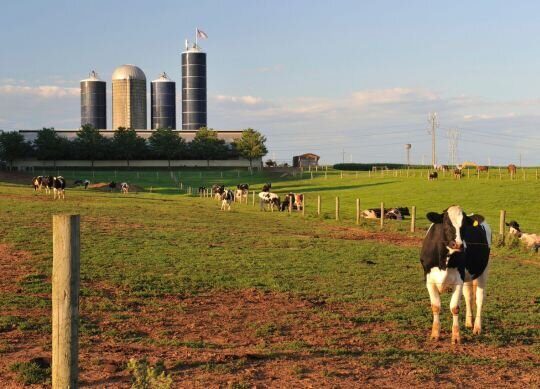Adjust Diet to Capitalize on Milk Component Price Changes
Although yield of milk fat is more responsive to diet changes, nutrition can also influence milk protein yield. Unfortunately, nutritional modifications that increase milk protein yield often decrease fat yield, and vice versa. Producers should consider altering diets to take advantage of changes in the relative value of milk fat to milk protein. Through most of 2020 and all of 2021 the value of milk protein was greater than of milk fat.
The main dietary factors related to increased milk protein yield are:
1. increasing dietary starch concentrations (but not so much as to cause acidosis)
2. increasing dietary inclusion of fermentable starch, such as high-moisture corn or wheat grain
3. increasing concentrations of high-quality, nondegradable protein
4. improving the amino acid profile by feeding specific protein sources or by feeding rumen-protected amino acids, especially methionine
5. reducing the concentration of dietary fat (fat supplements, distillers grain, whole cottonseed or whole soybeans)
The main factors related to increased milk fat yields are:
1. reducing dietary starch concentrations
2. reducing dietary inclusion of fermentable starch sources
3. increasing inclusion rate of specific supplemental fat (e.g., sources of palmitic acid)
4. increasing dietary cation anion difference (i.e., feed more potassium and sodium without increasing dietary chloride or sulfur)
5. reducing dietary sulfur concentrations to just meet requirements (practically, this usually means reducing the inclusion rate of distillers grain, which is usually high in sulfur).
Replacing feed components
If the price of milk protein is high relative to milk fat, replace some byproduct fiber (e.g., soy hulls or corn gluten feed) with corn grain. This will increase starch concentration, and usually will increase protein yield. Avoid excess starch because it can cause acidosis, severe milk fat depression, lameness and other health problems.
Because numerous factors affect the maximum safe starch concentration, specific guidelines cannot be given, but generally more than 28% to 30% starch is risky, especially with feeding high-moisture corn. On average, assuming the diet has adequate forage and fiber (i.e., does not cause ruminal acidosis), increasing starch concentration about 5 percentage units and reducing neutral detergent fiber by the same amount is expected to increase the daily yield of milk protein of an average Holstein cow by about 0.075 pound, but reduce milk fat by 0.06 pound. Feed costs would likely not change greatly, and if milk protein is more valuable, income over feed costs should increase.
Feeding a proven source of rumen-protected methionine (RP-met) usually increases milk protein yield. The response varies depending on diet, but on average, feeding 20 grams per day of methionine from RP-met is expected to increase milk protein yield by about 0.06 pound per day The cost of the RP-met product needs to be deducted from milk protein return to determine whether it is a profitable decision.
Think about product costs
Feed intake is not expected to change, so only the cost of the product needs to be considered. Feeding high-quality nondegradable protein with a good amino acid profile also often increases milk protein yield, but will increase diet costs. Make sure the increase in milk protein more than pays for the increase in feed costs.
If milk protein is valuable, feeding inadequate metabolizable protein or a diet with an improper amino acid profile can be costly — especially for fresh cows — because of long-term carryover effects. Several different sources of supplemental fat are available, and they can affect milk component yields differently. However, in general, supplemental fat usually increases milk fat yield but decreases milk protein percentage, and is either neutral or negative with respect to milk protein yield. In today’s economic environment, fat supplementation needs to be evaluated very carefully, and potential negative effects on milk protein must be included in the evaluation.
Producers do not have much control over the average milk price. However, by targeting nutrition to produce either milk protein or milk fat, producers can affect the milk price they receive. Milk composition can change rapidly in response to diet manipulation, which will allow producers to capture value based on changes in the market value of milk protein and milk fat. Continuous discussion with your Nobis Agri Science nutritionist will enable you to capture market these opportunities.
Adapted from Bill Weiss and Dianne Shoemaker for Farm Progress.



